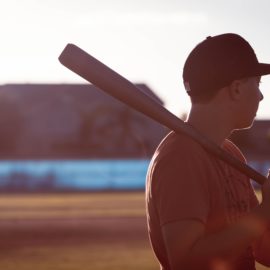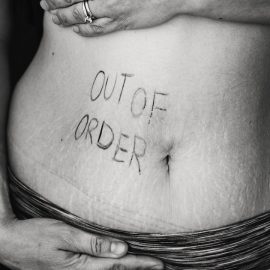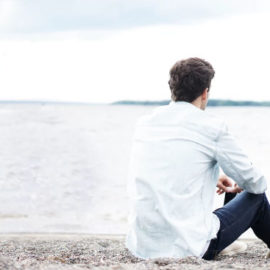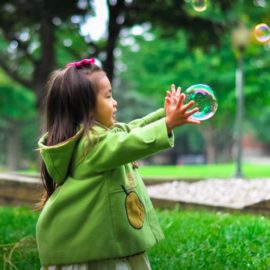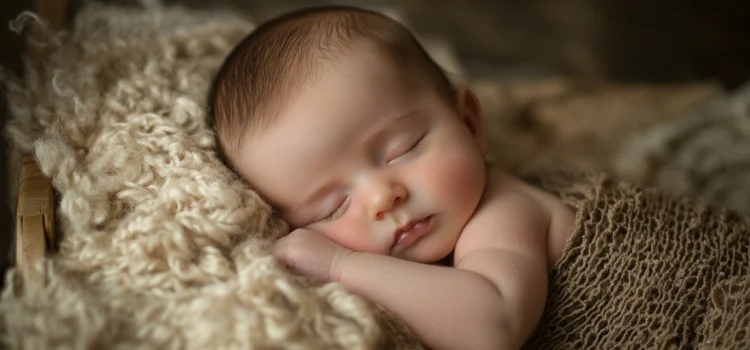
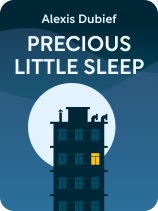
This article is an excerpt from the Shortform book guide to "Precious Little Sleep" by Alexis Dubief. Shortform has the world's best summaries and analyses of books you should be reading.
Like this article? Sign up for a free trial here.
Do you need a baby sleep guide to make your nights easier? What are the basic things you need to know about sleep safety for babies?
Alexis Dubief argues that contrary to popular belief, babies don’t naturally develop healthy sleep habits on their own—they need to be taught. However, without proper guidance, well-intentioned strategies can lead to poor sleep patterns.
Keep reading for an easy guide for healthy and safe sleep for newborn babies.
Sleep Basics for Babies
Dubief starts this baby sleep guide by saying healthy sleep is when your baby gets the right amount of sleep for their development stage, has minimal night awakenings unrelated to hunger, and has an easy, timely, and pleasant bedtime routine. She maintains that the most important way to encourage better sleep is to teach your baby to fall asleep independently. When they can fall asleep—and stay asleep—without your help, they’ll sleep well, and bedtime will be easy, short, and enjoyable.
| What Is Healthy Infant Sleep? What people consider healthy infant sleep isn’t universal across cultures or history—it’s a complex mix of societal norms, historical influences, and our understanding of biological processes. In the modern West, ideas about the healthiest ways for infants to sleep have shifted from flexible, responsive routines to structured schedules, which experts say may not align with natural sleep behaviors. For example, research evidence doesn’t support the idea that sleeping through the night is better for babies’ development, as they naturally wake between sleep cycles and this frequent waking is a protective mechanism. Additionally, independent, uninterrupted infant sleep is a relatively new and Western ideal. In many cultures around the world, babies sleep in the same bed with their parents, who find the idea of independent baby sleep upsetting and strange. Many sleep experts argue that the most harmful misconception about healthy infant sleep is the belief that there’s only one correct approach and outcome. In reality, all babies and their families have different needs and preferences regarding sleep. If Dubief’s approach doesn’t work for you or your child, there are other approaches that may suit you better, including attachment parenting methods. |
Sleep Safety for Babies
Before we dive into Dubief’s techniques and pointers for improving your baby’s sleep, it’s important to review her sleep safety guidelines. Safe infant sleep boils down to creating and maintaining a good sleeping environment. Dubief writes that the ideal sleep environment for safe and high-quality sleep is uninteresting, dark, and free from potential causes of injury: falls, toys that present choking hazards, or anything that may accidentally strangle the child.
The most critical part of safety for children under 12 months of age is minimizing the risk factors for Sudden Infant Death Syndrome (SIDS), the leading cause of infant mortality. She recommends that you talk to your doctor about reducing the risk of SIDS. Some common recommendations include:
- Always put your baby to sleep on their back on a firm, flat surface without loose bedding or objects that could cover their face.
- Until they’re 6 months old, have your baby sleep in your room: Room-sharing may lower SIDS risk by nearly 50%. However, don’t sleep with them in your bed—studies have found co-sleeping to increase the risk of SIDS.
- Dress them lightly to avoid overheating.
- Don’t use car seats for sleeping, especially for young and premature babies.
- Don’t fall asleep with your baby on a chair or couch, or while nursing, which increases the risk of suffocation.
| Pediatricians Recommendations for Safe Sleep Environments All of Dubief’s recommendations above align with The American Academy of Pediatrics’s (AAP) most recent recommendations for creating a safe and effective sleep environment for your baby and reducing the risk of SIDS. However, she doesn’t cover everything they recommend. For example, the AAP cautions against the use of popular infant biological monitoring devices, which companies market as a way to keep sleeping babies safer by tracking their heart and breathing rates. These products aren’t regulated like medical devices, and the data simply isn’t there to support using them to prevent sleep-related deaths. While they may provide peace of mind, you shouldn’t use them as a substitute for other safe sleep practices. To create the safest sleep environment possible for your baby and reduce the risk of SIDS as much as possible, make sure you understand all the AAP’s recommendations. |

———End of Preview———
Like what you just read? Read the rest of the world's best book summary and analysis of Alexis Dubief's "Precious Little Sleep" at Shortform.
Here's what you'll find in our full Precious Little Sleep summary:
- Techniques and pointers for improving your baby’s sleep
- Practical guidelines for infant sleep safety
- A nap chart to help you understand your child’s nap needs according to age

